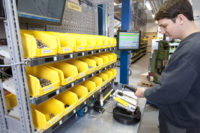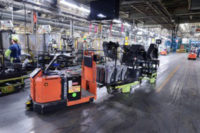Multifactor productivity measures the joint influences on economic growth of technological change, efficiency improvements, returns to scale, reallocation of services and other factors. Unlike labor productivity, which is measured in output per hour, multifactor productivity requires information on capital services and other data that are not available on a quarterly basis.
Multifactor productivity has not declined since the recession year of 1991. In 1998, the most recent year for which statistics are available, multifactor productivity in manufacturing increased 3.1 percent. Although that's slightly less than the 3.4 percent growth rate recorded in 1997, the increase was still much larger than the average over the postwar period.
The 1998 gain in multifactor productivity was the result of a 5.9 percent advance in output, less a 2.7 percent increase in combined inputs. Output growth was the most rapid since 1984, and the pace of growth of combined inputs was faster than in the previous 3 years.
In comparison, multifactor productivity for all private, nonfarm businesses increased only 1.5 percent in 1998.




